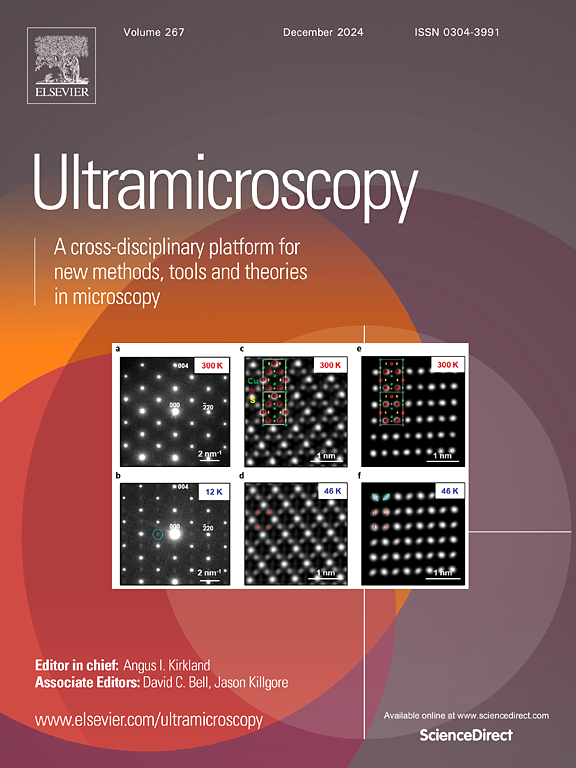使用创新的隔振扫描隧道显微镜进行高精度原子成像
IF 2
3区 工程技术
Q2 MICROSCOPY
引用次数: 0
摘要
扫描隧道显微镜(STM)中扫描单元的稳定性是实现高分辨率成像的关键。在这项研究中,我们提出了一种具有机械隔离扫描单元的非金属STM,确保长期漂移稳定性,低间隙和高重复性。通过将压电扫描管(PST)与压电电机管(PMT)解耦,该设计有效地减少了电机引起的不稳定性和振动,显著提高了STM的性能。关键部件采用非金属材料,防止涡流干扰,确保长期可靠性。基于蓝宝石的框架提供了高刚度和紧凑性,弯曲模式下的特征频率为16.2 kHz,减少了原子成像期间的振动噪声。该系统具有优异的稳定性,在X-Y平面和Z方向上保持低漂移率,确保精确的尖端样品对准。通过对石墨和TaS2表面进行高分辨率原子成像,验证了自制STM的性能。简单,紧凑,高精度步进机构,以及其在低电压下工作的能力,降低了实验的复杂性。这些特性有助于在高磁场和低温等受限环境下进行先进材料的研究。本文章由计算机程序翻译,如有差异,请以英文原文为准。

High-precision atomic imaging using an innovative vibration-isolated scanning tunneling microscope
The stability of the scanning unit in a scanning tunneling microscope (STM) is essential for achieving high-resolution imaging. In this study, we present a non-metallic STM with a mechanically isolated scanning unit, ensuring long-term drift stability, low backlash, and high repeatability. By decoupling the piezoelectric scanning tube (PST) from the piezoelectric motor tube (PMT), the design effectively minimizes motor-induced instabilities and vibrations, significantly improving STM performance. The use of non-metallic materials for key components prevents eddy current interference and ensures long-term reliability. A sapphire-based frame provides high stiffness and compactness, with an eigenfrequency of 16.2 kHz in bending mode, reducing vibration noise during atomic imaging. The system exhibits excellent stability, maintaining low drift rates in both the X-Y plane and Z direction, ensuring precise tip-sample alignment. The performance of the home-built STM was validated through high-resolution atomic imaging of graphite and TaS2 surfaces. The simple, compact, and high-precision stepping mechanism, along with its ability to operate at low voltage, reduces experimental complexity. These features facilitate advanced material studies in constrained environments, such as high magnetic fields and low temperatures.
求助全文
通过发布文献求助,成功后即可免费获取论文全文。
去求助
来源期刊

Ultramicroscopy
工程技术-显微镜技术
CiteScore
4.60
自引率
13.60%
发文量
117
审稿时长
5.3 months
期刊介绍:
Ultramicroscopy is an established journal that provides a forum for the publication of original research papers, invited reviews and rapid communications. The scope of Ultramicroscopy is to describe advances in instrumentation, methods and theory related to all modes of microscopical imaging, diffraction and spectroscopy in the life and physical sciences.
 求助内容:
求助内容: 应助结果提醒方式:
应助结果提醒方式:


